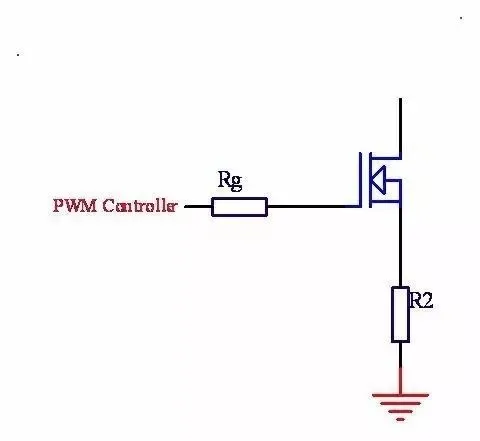根節(jié)點那一節(jié)我們說過,最簡單的設(shè)備樹也必須包含cpus節(jié)點和memory節(jié)點。memory節(jié)點用來描述硬件內(nèi)存布局的。如果有多塊內(nèi)存,既可以通過多個memory節(jié)點表示,也可以通過一個memory節(jié)點的reg屬性的多個元素支持。舉一個例子,假如某個64位的系統(tǒng)有兩塊內(nèi)存,分別是
? RAM: 起始地址 0x0, 長度 0x80000000 (2GB)
? RAM: 起始地址 0x100000000, 長度 0x100000000 (4GB)
對于64位的系統(tǒng),根節(jié)點的#address-cells屬性和#size-cells屬性都設(shè)置成2。一個memory節(jié)點的形式如下(還記得前幾節(jié)說過節(jié)點地址必須和reg屬性第一個地址相同的事情吧):
?? ?memory@0 {
?? ??? ?device_type = "memory";
?? ??? ?reg = <0x000000000 0x00000000 0x00000000 0x80000000
?? ??? ??????? 0x000000001 0x00000000 0x00000001 0x00000000>;
?? ?};
兩個memory節(jié)點的形式如下:
?? ?memory@0 {
?? ??? ?device_type = "memory";
?? ??? ?reg = <0x000000000 0x00000000 0x00000000 0x80000000>;
?? ?};
?? ?memory@100000000 {
?? ??? ?device_type = "memory";
?? ??? ?reg = <0x000000001 0x00000000 0x00000001 0x00000000>;
?? ?};
chosen節(jié)點也位于根節(jié)點下,該節(jié)點用來給內(nèi)核傳遞參數(shù)(不代表實際硬件)。對于Linux內(nèi)核,該節(jié)點下最有用的屬性是bootargs,該屬性的類型是字符串,用來向Linux內(nèi)核傳遞cmdline。規(guī)范中還定義了stdout-path和stdin-path兩個可選的、字符串類型的屬性,這兩個屬性的目的是用來指定標準輸入輸出設(shè)備的,在linux中,這兩個屬性基本不用。
memory和chosen節(jié)點在內(nèi)核初始化的代碼都位于start_kernel()->setup_arch()->setup_machine_fdt()->early_init_dt_scan_nodes()函數(shù)中(位于drivers/of/fdt.c),復(fù)制代碼如下(本節(jié)所有代碼都來自官方內(nèi)核4.4-rc7版本):
1078 void __init early_init_dt_scan_nodes(void)
1079 {???? ?
1080???? /* Retrieve various information from the /chosen node */
1081???? of_scan_flat_dt(early_init_dt_scan_chosen, boot_command_line);
1082?
1083???? /* Initialize {size,address}-cells info */
1084???? of_scan_flat_dt(early_init_dt_scan_root, NULL);
1085?
1086???? /* Setup memory, calling early_init_dt_add_memory_arch */
1087???? of_scan_flat_dt(early_init_dt_scan_memory, NULL);
1088 }
of_scan_flat_dt函數(shù)掃描整個設(shè)備樹,實際的動作是在回調(diào)函數(shù)中完成的。第1081行是對chosen節(jié)點操作,該行代碼的作用是將節(jié)點下的bootargs屬性的字符串拷貝到boot_command_line指向的內(nèi)存中。boot_command_line是內(nèi)核的一個全局變量,在內(nèi)核的多處都會用到。第1084行是根據(jù)根節(jié)點的#address-cells屬性和#size-cells屬性初始化全局變量dt_root_size_cells和dt_root_addr_cells,還記得前邊說過如果沒有設(shè)置屬性的話就用默認值,這些都在early_init_dt_scan_root函數(shù)中實現(xiàn)。第1087行是對內(nèi)存進行初始化,復(fù)制early_init_dt_scan_memory部分代碼如下:
?893 /**
?894? * early_init_dt_scan_memory - Look for an parse memory nodes
?895? */
?896 int __init early_init_dt_scan_memory(unsigned long node, const char *uname,
?897????????????????????? int depth, void *data)
?898 {
?899???? const char *type = of_get_flat_dt_prop(node, "device_type", NULL);
?900???? const __be32 *reg, *endp;
?901???? int l;
?902?
?903???? /* We are scanning "memory" nodes only */
?904???? if (type == NULL) {
?905???????? /*
?906????????? * The longtrail doesn't have a device_type on the
?907????????? * /memory node, so look for the node called /memory@0.
?908????????? */
?909???????? if (!IS_ENABLED(CONFIG_PPC32) || depth != 1 || strcmp(uname, "memory@0") != 0)
?910???????????? return 0;
?911???? } else if (strcmp(type, "memory") != 0)
?912???????? return 0;
?913?
?914???? reg = of_get_flat_dt_prop(node, "linux,usable-memory", &l);
?915???? if (reg == NULL)
?916???????? reg = of_get_flat_dt_prop(node, "reg", &l);
?917???? if (reg == NULL)
?918???????? return 0;
?919?
?920???? endp = reg + (l / sizeof(__be32));
?921?
?922???? pr_debug("memory scan node %s, reg size %d,
", uname, l);
?923?
?924???? while ((endp - reg) >= (dt_root_addr_cells + dt_root_size_cells)) {
?925???????? u64 base, size;
?926?
?927???????? base = dt_mem_next_cell(dt_root_addr_cells, ?);
?928???????? size = dt_mem_next_cell(dt_root_size_cells, ?);
?929
?930???????? if (size == 0)
?931???????????? continue;
?932???????? pr_debug(" - %llx ,? %llx
", (unsigned long long)base,
?933???????????? (unsigned long long)size);
?934?
?935???????? early_init_dt_add_memory_arch(base, size);
?936???? }
?937?
?938???? return 0;
?939 }
第914行可以看出linux內(nèi)核不僅支持reg屬性,也支持linux,usable-memory屬性。對于dt_root_addr_cells和dt_root_size_cells的使用也能看出根節(jié)點的#address-cells屬性和#size-cells屬性都是用來描述內(nèi)存地址和大小的。得到每塊內(nèi)存的起始地址和大小后,在第935行調(diào)用early_init_dt_add_memory_arch函數(shù),復(fù)制代碼如下:
?
?983 void __init __weak early_init_dt_add_memory_arch(u64 base, u64 size)
?984 {
?985???? const u64 phys_offset = __pa(PAGE_OFFSET);
?986?
?987???? if (!PAGE_ALIGNED(base)) {
?988???????? if (size < PAGE_SIZE - (base & ~PAGE_MASK)) {
?989???????????? pr_warn("Ignoring memory block 0x%llx - 0x%llx
",
?990???????????????? base, base + size);
?991???????????? return;
?992???????? }
?993???????? size -= PAGE_SIZE - (base & ~PAGE_MASK);
?994???????? base = PAGE_ALIGN(base);
?995???? }
?996???? size &= PAGE_MASK;
?997?
?998???? if (base > MAX_MEMBLOCK_ADDR) {
?999???????? pr_warning("Ignoring memory block 0x%llx - 0x%llx
",
1000???????????????? base, base + size);
1001???????? return;
1002???? }
1003?
1004???? if (base + size - 1 > MAX_MEMBLOCK_ADDR) {
1005???????? pr_warning("Ignoring memory range 0x%llx - 0x%llx
",
1006???????????????? ((u64)MAX_MEMBLOCK_ADDR) + 1, base + size);
1007???????? size = MAX_MEMBLOCK_ADDR - base + 1;
1008???? }
1009?
1010???? if (base + size < phys_offset) {
1011???????? pr_warning("Ignoring memory block 0x%llx - 0x%llx
",
1012??????????????? base, base + size);
1013???????? return;
1014???? }
1015???? if (base < phys_offset) {
1016???????? pr_warning("Ignoring memory range 0x%llx - 0x%llx
",
1015???? if (base < phys_offset) {
1016???????? pr_warning("Ignoring memory range 0x%llx - 0x%llx
",
1017??????????????? base, phys_offset);
1018???????? size -= phys_offset - base;
1019???????? base = phys_offset;
1020???? }
1021???? memblock_add(base, size);
1022 }
從以上代碼可以看出內(nèi)核對地址和大小做了一系列判斷后,最后調(diào)用memblock_add將內(nèi)存塊加入內(nèi)核。
?
 電子發(fā)燒友App
電子發(fā)燒友App





























評論